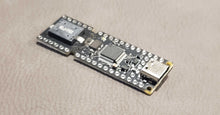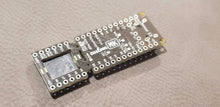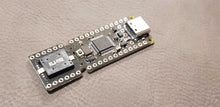
Bonsai C3 is a high performance drop-in replacement for the ProMicro. It is functionally equivalent to the Proton C.
Bonsai C3 is an open source STM32F303CCT6 microcontroller board with:
- USB-C
- ARM-based microcontroller
- 72MHz
- 256kB program flash memory
- 48kB RAM
- Reset circuit on-board
- Audio speaker on-board

STM32F303 includes a built-in USB bootloader, so all you need to start flashing firmware onto it is a USB-C cable.
Because Bonsai C3 is an open source equivalent to Proton C, within QMK you can treat it exactly like you would a Proton C (such as using "CONVERT_TO=proton_c")
Why Choose Bonsai C3 over a ProMicro?
Bonsai C3 offers a significant increase in performance compared to ProMicro. In addition to the metrics of higher pin count and higher operating frequency, the extra program memory on the microcontroller means you won't have to disable features to make your firmware fit within the limited 32kB space offered by a ProMicro. As QMK grows to be even more feature-rich in the future, firmware that used to fit on a ProMicro may suddenly find itself unable to compile small enough to fit unless firmware features are disabled. But with 256kB of program memory on the microcontroller used in Bonsai C3, you will have more than enough space for every feature you might want in a keyboard.
As custom mechanical keyboard capabilities expand to regularly include OLED displays, LCD displays, and audio effects, the memory needed to store even simple animations and sounds rapidly exceeds the storage capability of a ProMicro. But with 256kB of program memory you can store full color images, short animations, or quite a bit of dynamically-generated visual content.
While there is no EEPROM/FRAM on Bonsai C3, the wear-leveling EEPROM driver in QMK will allow configurations settings (like dynamic key mappings) to be stored in unused program memory.
The default Pro-Micro as-shipped requires a rapid double-press of the reset button to enter bootloader mode for flashing new firmware, whereas a simple, single press of reset for Bonsai C3 consistently and reliably enters bootloader mode. Furthermore, the USB bootloader in Bonsai C3 is permanently programmed into the microcontroller, meaning there is no way to accidentally overwrite the bootloader.









